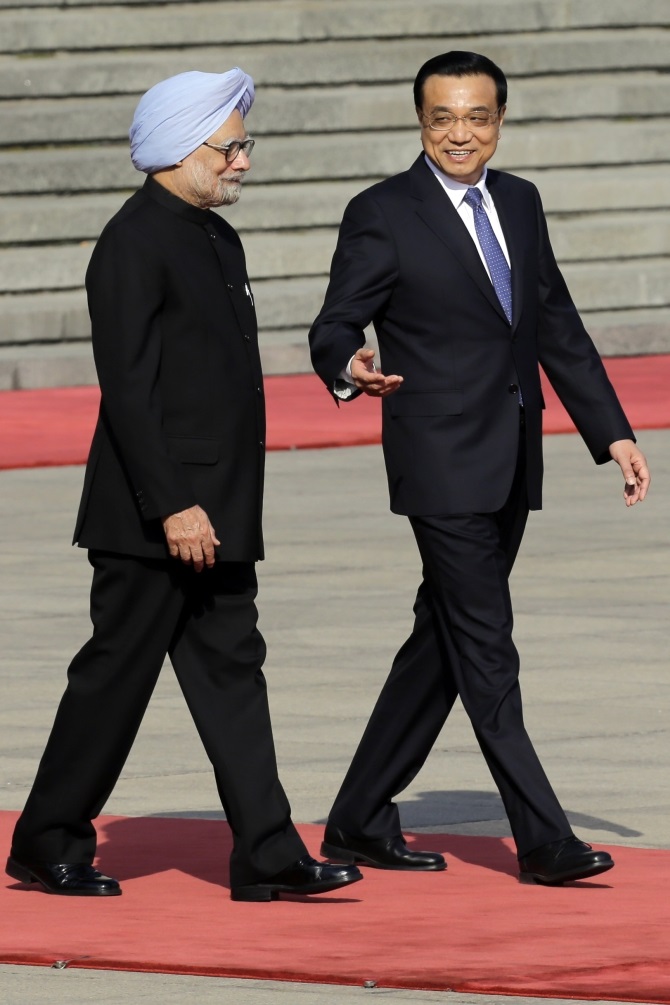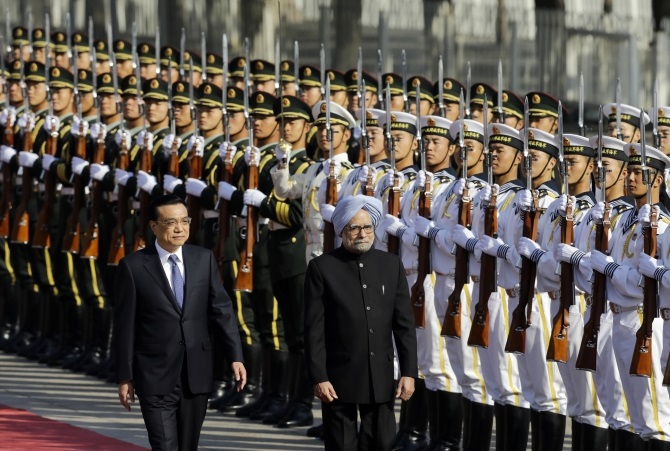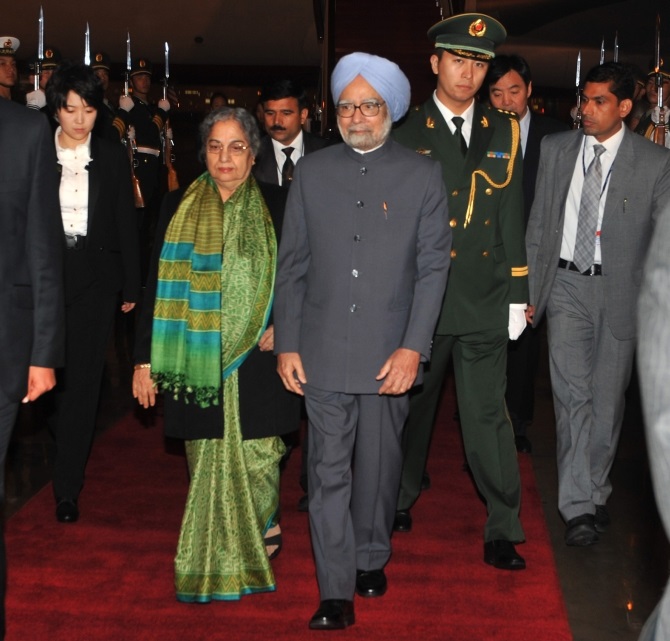 | « Back to article | Print this article |
India-China sign pact to maintain peace at border
Wednesday’s border pact between India and China has strengthened the standard operating procedures, graduated to higher level the talks to take place between the two countries if there is a repeat of a Depsang kind of incident, and has ensured that both countries will not tail each other’s military teams at the border where there is no common understanding of the Line of Actual Control, reports Sheela Bhatt from Beijing.
Indian and China on Wednesday morning signed the Border Defence Co-operation Agreement in Beijing in a ceremony held at the Great Hall of the People. The agreement is a step forward in one of India's most important bilateral relations, and one of the most complex as well.
Along the India-China border, incursions, intrusions and aggression of even the mildest kind have been creating a bitter atmosphere between the two neighbours over the past few months. Particularly, the incident at the Depsang Valley where Chinese troops encroached upon Indian territory created tremendous flutter within India.
Wednesday’s border pact has strengthened the standard operating procedures, graduated to higher level the talks to take place between the two countries if there is a repeat of a Depsang kind of incident, and has ensured that both countries will not tail each other’s military teams at the border where there is no common understanding of the Line of Actual Control.
Click NEXT to read further…
India-China sign pact to maintain peace at border
The details of the agreements of 1993, 1996 and 2005 have been improved upon or revisited with more emphasis keeping in mind the changing times. The India-China annual defence dialogue will help set the mechanism. The BDCA talks more about ground-level management, and faster and frequent communication is ensured thorough the pact.
The spirit behind the agreement suggests that both countries want to maintain peace at the borders, so that they can get on with doing more business with each other. Maximum self-restraint is recommended at the LAC.
Prime Minister Manmohan Singh and Chinese Premier Li Keqiang met on Wednesday in a restricted meeting for around 45 minutes followed by delegation level talks in the Great Hall of the People. Planning Commission deputy chairman Montek Singh Ahluwalia, National Security Advisor Shivshankar Menon, Foreign Secretary Sujata Singh and Indian ambassador to Beijing Subrahmanyam Jaishankar represented the Indian side at the talks.
Click NEXT to read further…
India-China sign pact to maintain peace at border
The border agreement was first proposed by China, but the draft was changed many times over the last six months. Along with the pact that would help stabilise borders between India and China, eight other agreements and MoUs were signed. An important MoU signed was the one to strengthen trans-border rivers co-operation.
From the business point of view, the Indian power sector will find the establishment of the Chinese power equipment service centres useful. India has a tremendous need for generating more power and Chinese power plants have a huge market ready in India. The turnkey power projects, including the service centres, will get a major boost with the MoU. Delhi-Beijing, Bengaluru-Chengdu and Kolkata-Kunming will have a sister-city relationship, and an agreement has been signed to get them closer.
The full text of the Border Defence Co-operation Agreement
TOP photo features you missed last week
Click on MORE to see another PHOTO features...



